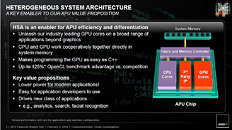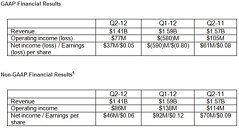HSA Announces Publication of New Guide to Heterogeneous System Architecture
The Heterogeneous System Architecture (HSA) Foundation today announced publication of Heterogeneous System Architecture: A New Compute Platform Infrastructure (1st Edition), edited by Dr. Wen-Mei Hwu. The book, published by Elsevier Publishing (found here: here), offers a practical guide to understanding HSA, a standardized platform design that unlocks the performance and power efficiency of parallel computing engines found in most modern electronic devices.
"Heterogeneous computing is a key enabler of the next generation of compute environments, wherein entire systems will interconnect autonomously and in real time," said HSA Foundation President Dr. John Glossner. "Developers who are skilled in the use of this platform will have the upper hand in terms of design time, IP portability, power efficiency and performance."
To support these developers, the HSA Foundation working groups are rapidly standardizing tools and APIs for debug and profiling, creating guidelines for incorporating IP from multiple vendors into the same SoC, and much more. The Foundation released the v1.0 specification in March, and soon thereafter, companies including AMD, ARM, Imagination Technologies and MediaTek previewed their plans for rolling out the world's first products based on HSA.
"Heterogeneous computing is a key enabler of the next generation of compute environments, wherein entire systems will interconnect autonomously and in real time," said HSA Foundation President Dr. John Glossner. "Developers who are skilled in the use of this platform will have the upper hand in terms of design time, IP portability, power efficiency and performance."
To support these developers, the HSA Foundation working groups are rapidly standardizing tools and APIs for debug and profiling, creating guidelines for incorporating IP from multiple vendors into the same SoC, and much more. The Foundation released the v1.0 specification in March, and soon thereafter, companies including AMD, ARM, Imagination Technologies and MediaTek previewed their plans for rolling out the world's first products based on HSA.




